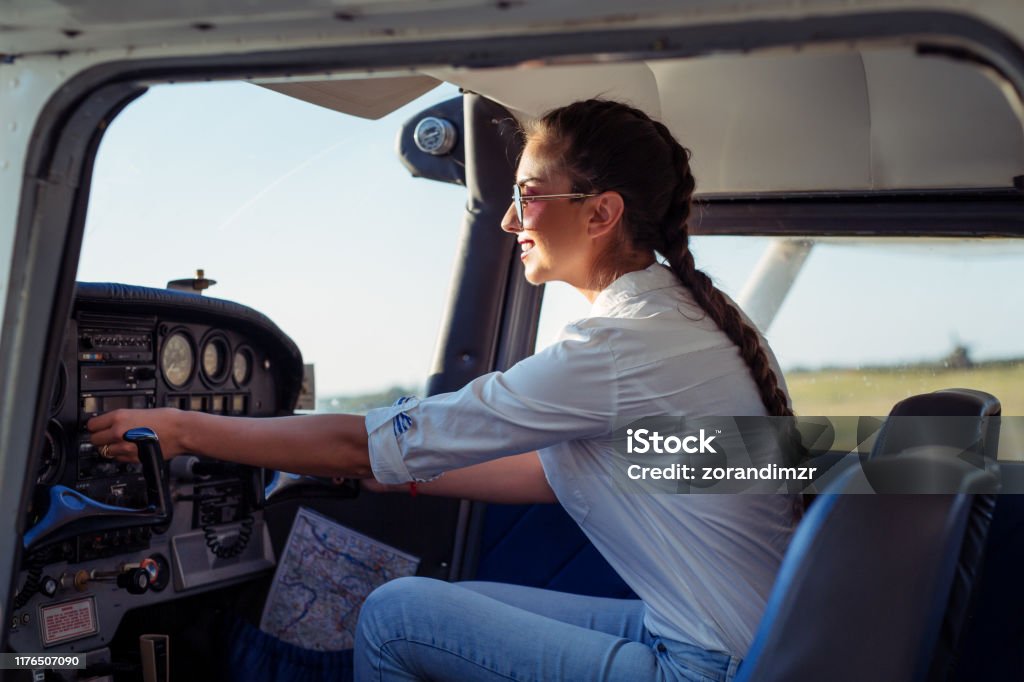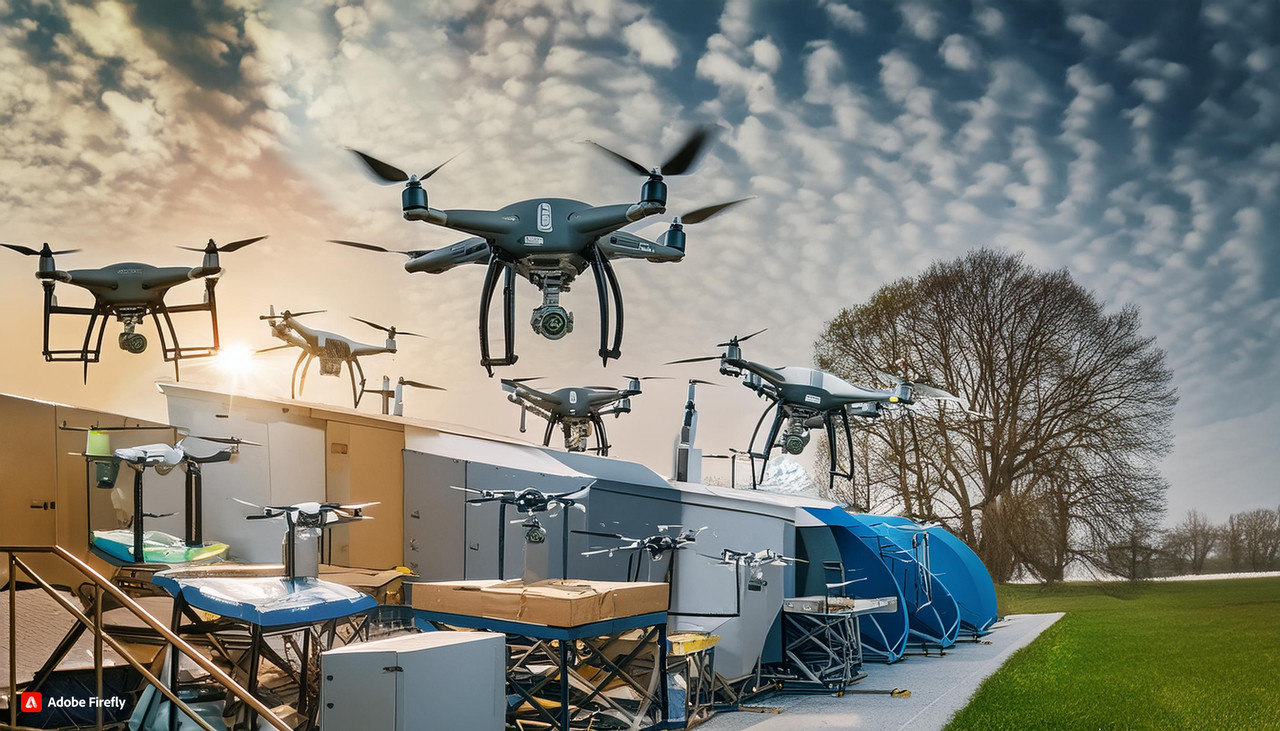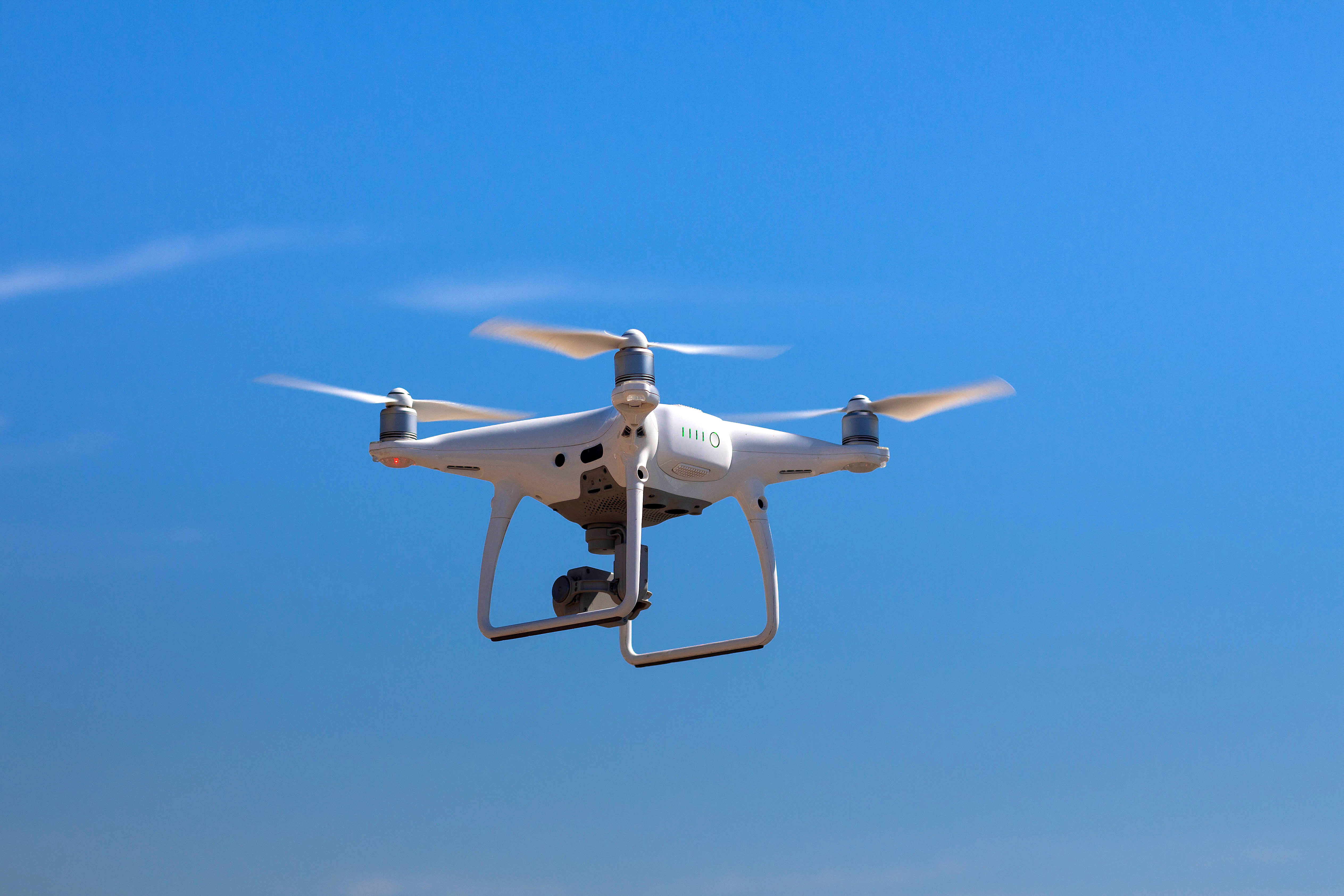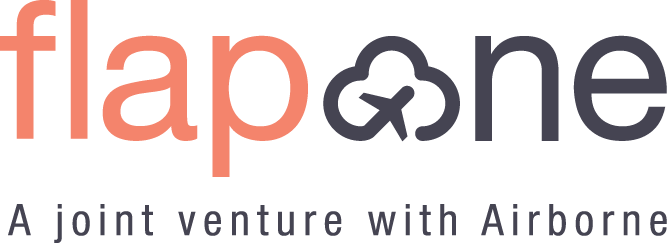

How to Become a Pilot After 12th in India?
A pilot does not just experience the thrill of flying but also considers the safety of the passengers in the aircraft. They are skilled individuals with flight licenses, and they operate aeroplanes or helicopters. If you want to become a pilot, learn how to become a pilot after 12th in this piece in detail.
Becoming a pilot after the 12th requires selecting the appropriate program that can be both emotionally and financially rewarding. This propels emerging aviation professionals toward becoming full-time aviation professionals.

What are the Different Types of Pilots?
Piloting provides various career options. These pathways empower aspiring pilots to select their preferred areas, giving them a wide range of prospects. These are the different types of piloting careers that any pilot can take up.
Airline Pilots: They operate aircraft mainly intended for passenger transportation. They work mostly in domestic and International airlines; they can take up this job after procuring a commercial pilot license (CPL).
Private Pilots: Private pilots operate aeroplanes possessed by wealthy people. They cater to the requirements of private jet owners. To become a private pilot, one must acquire a Private Pilot License or PPL.
Flight Instructors: They train and educate aspiring pilots. They are an integral part of flight schools and communicate their knowledge to future pilots, making them ready to be a part of the ever-evolving aviation industry.
Air Force Pilots: These pilots have all the knowledge and expertise needed to fly advanced jet aircraft in the Air Force. They must pass the AFCAT exam and undergo training before joining the Indian Air Force.

Skills Required to Become a Pilot
Foundational skills can help you go forward in your journey of finding an answer to the question of how to become a pilot after 12th class. The aviation industry offers various challenges that must be overcome, and skills can contribute to your success in numerous scenarios.
Teamwork and Leadership: Pilots should be able to work as a team and lead their fellow pilots and other crew members.
Communication and Collaboration: Excellent communication and collaboration are vital for interactions with crew members and air traffic control.
Decision-Making and Stress Management: Pilots should be quick enough to make well-informed decisions while managing stress in situations where there is a lot of pressure on their heads.
Spatial Awareness and Coordination: Excellent spatial awareness and coordination are the need of the hour when it comes to piloting, precise control, and navigation. There is a need for exceptional precision when aircraft are to be manoeuvred.
Staying Calm Under Pressure: The ability to remain cool as a cucumber in challenging circumstances is important for making correct judgments at the right time and also ensuring the safety of the passengers and the crew members.
Proficiency in Mathematics and Physics: A good understanding of mathematics and physics is important in navigation, flight planning, and aircraft performance. So, if you are passionate about becoming a pilot, you must develop an interest in both subjects from an early age.

Eligibility to Become a Pilot
To give an apt answer to the question of how to become a pilot after 12th, there are various aviation courses which can be done after 12th; specific eligibility criteria must be met for all these courses. The following are the prerequisites to become a pilot:
Minimum Age and Educational Qualification
· The age of any applicant at the time of enrollment should be at least 17 years.
· 50% marks in 12th is mandatory, though this may differ depending on the requirements of the institute.
Academic Subjects
- Completing Maths, Physics, Chemistry, and English as part of the MPC Intermediate subjects is mandatory.
- If you are not a science student, you can pass these subjects privately through Open Schooling.
Medical Certificate
- Aspiring pilots should have a medical certificate from the relevant authorities, which certifies that the applicants meet the mandatory health standards.
Height Requirements
Applicants should be at least 5ft 2in (157cm) tall, and their maximum height should be not more than 6ft 3in (191cm).

License Required to Become a Pilot
Commercial Pilots fly passenger or cargo aircraft to transport individuals or goods within a nation or globally. They can also propel private aircrafts. Moreover, some Commercial Pilots are accomplished in helicopter operations. Here are the licenses necessary to start a career as a pilot after completing 12th:
Private Pilot License: This is the initial license obtained by aspiring pilots. It lets them fly an aircraft for non-commercial purposes or private transportation. To get the PPL, you must have the required number of flight hours, pass theoretical and practical exams, and meet medical fitness criteria.
Commercial Pilot License: This is the license obtained after PPL. With this, a pilot becomes entitled to operate an aircraft for commercial purposes, including flying for airlines or conducting paid flights. To get a CPL, you must have the additional flight hours under your belt, pass exams, complete flight training, and meet medical requirements.
Instrument Rating: This is an additional qualification attained along with the CPL. It lets pilots fly aircraft exclusively by referring to instruments, even in low-light conditions or hostile weather. IR training includes mastering instrument flying methods and passing the required exams.
Airline Transport Pilot License: This is the highest pilot certification level. ATPL pilots can serve as captains on commercial aircraft. To acquire an ATPL, pilots must fulfil the required flight experience requirements, undergo advanced training, and pass theoretical and practical examinations, which are the part of the process of how to become a pilot after 12th standard.

Discussing Pilot Courses in Detail
Commercial Pilot License (CPL) Course
- CPL Course Syllabus and Duration
Ground School: This is a theoretical training covering various subjects, which are discussed below. There is a minimum of 200 hours of classroom instruction, or, you can say, theory classes. This can be taken through online or offline modes
Flight Training: 200 hours of flight time, including solo and dual instruction hours, are mandatory for flight training. This includes instrument flying, advanced manoeuvres, cross-country navigation, and emergency procedures.
Multi-Engine Rating: Most CPL courses include a multi-engine rating involving additional flight training in a multi-engine aircraft.
Exams: After completing the ground and flight training, pilots need to pass a series of written exams and practical tests to obtain a CPL.
Cost of Commercial Pilot License Course
The cost of the CPL course can differ depending on the country of the pilot training, the flight school, and the aircraft type.
The cost of this course in India can range from Rs. 25 lakhs to Rs. 40 lakhs. This includes ground training, flight training, instructor fees, aircraft rental and other miscellaneous expenses.
Getting Through the Subjects of CPL Ground Classes
Aircraft Air Navigation: It is a subject emphasizingthe principles and practices required to safely navigate aircraft from one point to another. This covers numerous navigation techniques, the use of navigational aids, and the effect of diverse navigation factors on piloting.
Aircraft Aviation Meteorology: This helps pilot license applicants to understand the effects of weather on aircraft operations. It teaches interpretation and forecasting techniques and weather data.
Aircraft Air Regulation: This section examines the regulatory framework that governs the aviation sector, which comprises national and international aviation laws, safety guidelines, and operational standards.
Technical General: This subject familiarizes students with the technicalities of aircraft systems and operations. It comprises important principles, maintenance procedures, and troubleshooting practices needed to guarantee an aircraft's safety.
Radio Telephony: This subject highlights aviation's communication protocols and measures. It covers the use of radio equipment, standard phraseology, and communication techniques vital for ensuring safe air traffic control.
Private Pilot License (PPL) Course Detail
- PPL Course
The course helps students to have the knowledge and skills needed for the safe operation of an aircraft.
Ground School: The ground training covers numerous aspects of aviation theory, including aircraft systems, navigation, meteorology, aerodynamics, air law, and human factors. This license takes about 40 to 60 hours of classroom instruction.
Flight Training: Flight training involves a minimum of 40 to 50 hours of flight time and a stipulated number of solo and dual instruction hours. It comprises all the basic manoeuvres, takeoff and landing techniques, navigation, and emergency procedures.
Exams: Pilots must pass written exams and flight tests to obtain PPL after the ground school and practical training.
- Cost of Private Pilot License Course
The cost of this course can vary depending on numerous factors, including the country of the course, the flight school, and the aircraft you fly. In India, the cost can range anywhere from Rs. 6 lakhs to Rs. 10 lakhs. This total cost includes the cost of ground school, flight training, aircraft rental, flight instructor fees, fuel charges, and other expenses.

Admission Process for Becoming a Pilot After 12th
Pass DGCA Class 2 Medical Examination
Aspiring pilots should meet specific qualifications, including passing the DGCA's Class 2 Medical Exam. Airline pilots should have a bachelor's degree, while commercial pilots should have passed the class 12th or equivalent.
Take Admission to a Flight School
In the journey of how to become a pilot after 12th, for a pilot license, a person must complete the stipulated flight training hours. The number depends on the type of pilot program pursued. For example, a commercial pilot's license requires 250 flight hours, while an airline pilot's license requires 1,500 flight hours. While formal education offers an important understanding, additional avenues, such as hiring a private tutor or recruiting in the military, can provide comprehensive knowledge and practical experience in aviation.
Accumulate the Stipulated Flight Hours
At least 200 flight hours are necessary to meet the requirements. The initial stage involves accruing the prescribed flight hours, followed by a written examination evaluating your flying skills and passing a medical exam. It is essential to follow these steps, and preparation should be done adequately.
Some airlines might also take aptitude tests and psychological evaluations in their pilot hiring procedures. Upon selection, pilots experience a few extra weeks of training and flying to gain skills as co-pilots. It is beneficial to have previous experience with a small-scale airline, as it can be helpful in the future if your ambitions include being a pilot in a major airline.
Get a CPL Certificate
Progression from pilot to captain is only dependent on superiority and experience. To acquire additional flight ratings, one must undertake additional written and practical tests administered by the Federal Aviation Administration. It is important to have an unceasing learning approach and stay updated with regard to industry expansions.

Career Opportunities for a Pilot After 12th
The profession of a pilot is renowned for its prestige and plethora of opportunities. Pilots are skilled professionals in maneuvering aeroplanes and helicopters. An airline pilot's key responsibility involves operating the aircraft's engines and steering the aircraft. They also conduct pre-flight checks on the engine to guarantee safety and unceasingly monitor fuel consumption and aircraft systems throughout the flight.
Aspiring Pilots who want to work for an airline should know all about how to become a pilot after 12th, including a specific number of flight hours and maintaining good mental and physical well-being. They can also take advantage of opportunities with both government-owned and privately-owned international and domestic airlines.

How to Apply for a Pilot Job?
This might sound simple, but people often get scammed by fake job offers. Legitimate airlines won’t charge for a job. Airlines hire based on their requirements. There can be a question about how you know when airlines are hiring. To get an answer to this question, regularly check the career pages and the social media accounts of the airline you wish to apply for.
There are two types of airline job vacancies in India: Non-Type-Rated and Type-Rated. Non-type-rated positions are for pilots who hold a CPL but still require a type rating obtained through the airline’s training facilities or third-party institutes. Type-rated applicants can also apply for Non-Type-Rated positions.
Here is the step-wise process of applying for a pilot job in India
1. Register for the jobs from the Website of the airline
2. Clear the Entrance Exam held by the Airline
3. Clear the Psychometric and COMPASS pilot test
4. Clear the interview
Pilots can work in the private sector and government jobs in national airlines or the military. The hiring procedure is similar for pilots who wish to work in both industries after completing class 12th.

Why Choose Flapone Aviation to Become a Pilot?
If you are still wondering how to become a pilot after 12th, various piloting courses are available; it is just a matter of choice. A piloting career is a dream of many, not only in India but also around the world. With the growth of the aviation industry in India, the demand for pilots will rise in the coming years. Students who wish to become pilots after 12th grade should consider the options wisely and choose the best course that fits their goals and interests.
The best theoretical and practical training can be provided only by the best aviation training institute. And we at Flapone Aviation are undoubtedly the best in the business, especially in Delhi-NCR. With the best resources, we can dole out the best results for aspiring pilots, be it the aircraft, the instructors, or familiarity with the latest technologies.
Regarding financial constraints, the amount we take stands nowhere compared to the quality of training we give to individuals who dream of ruling the sky one day as able pilots. So, do not think twice before enrolling with us to give wings to your dreams of becoming a pilot.
Related Blog
Latest updates and insights from Flapone Aviation.

What Types of Drones Are Present in the Market?
October 8, 2024

What are the Basics of Drone Piloting?
February 7, 2025

Airborne Aviation Academy To Join Hands with Flapone Aviation
February 7, 2025



